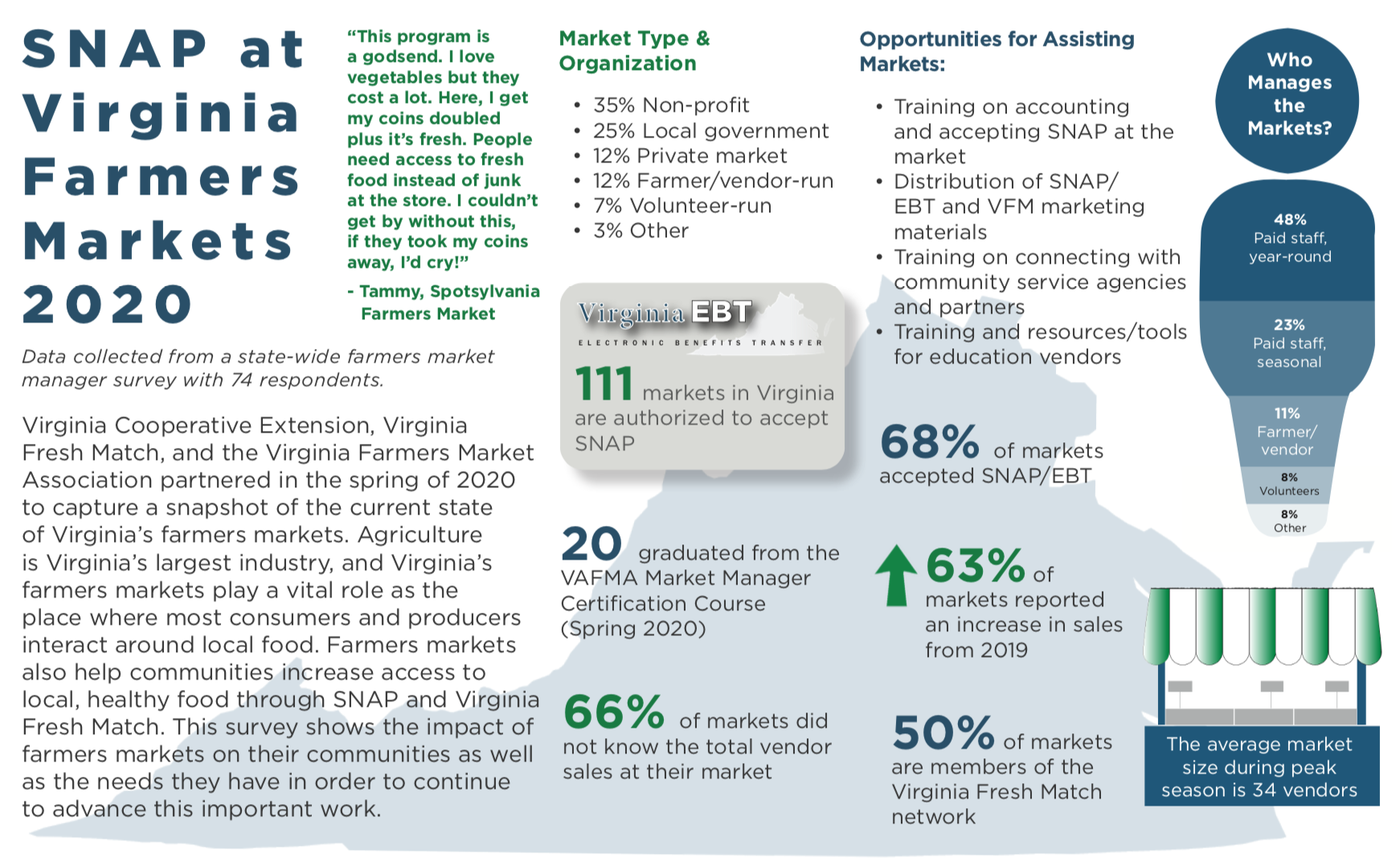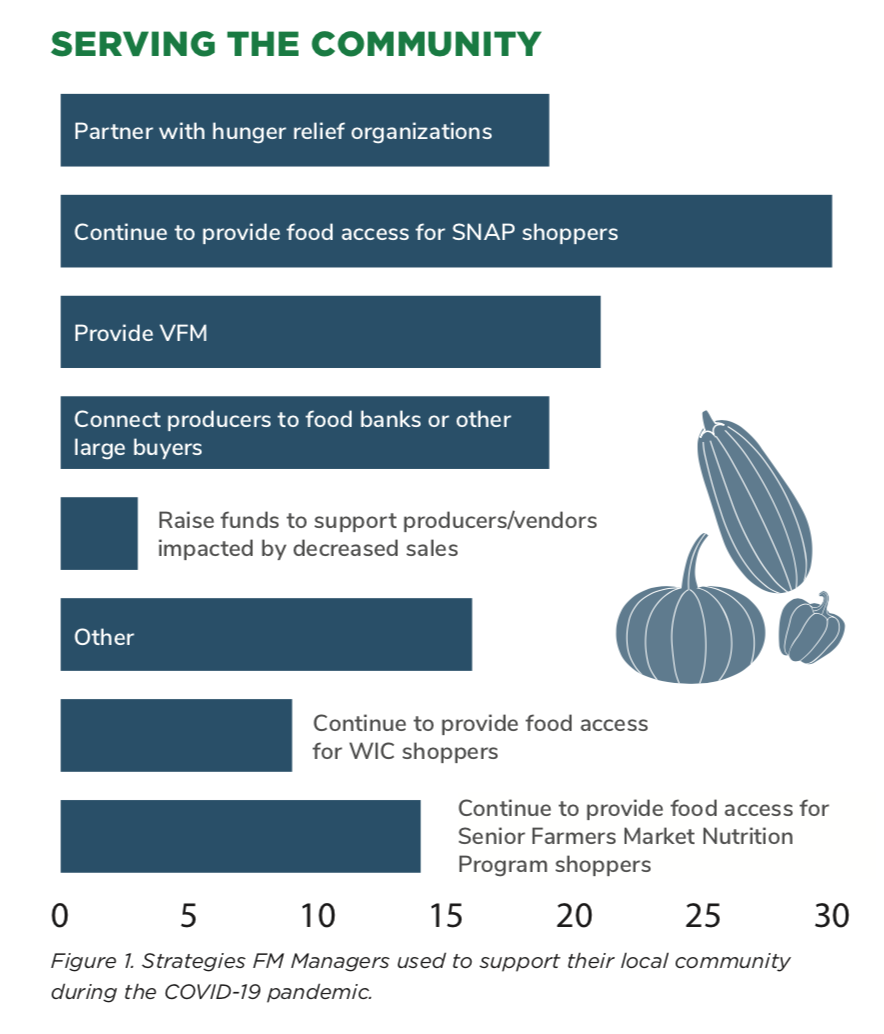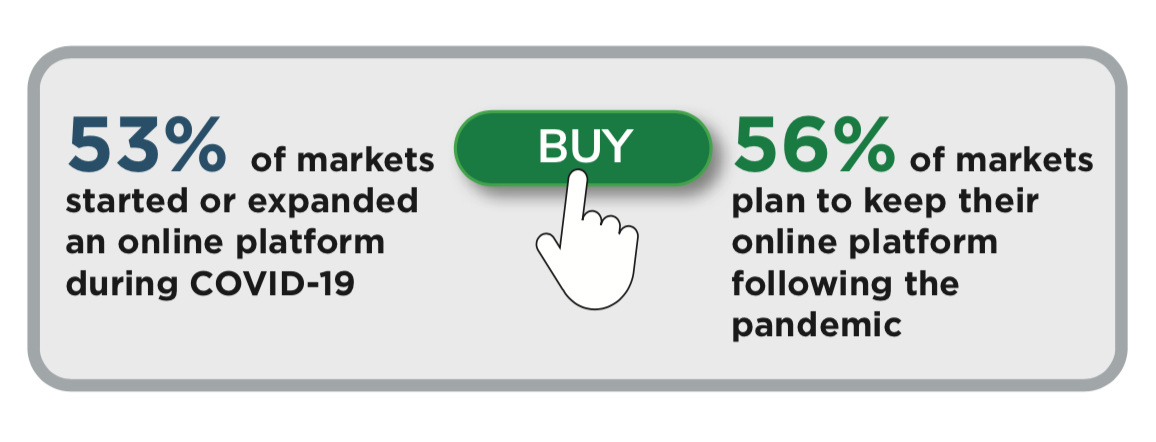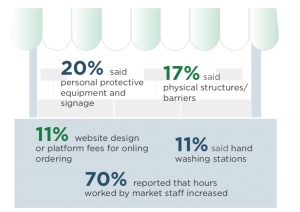By Virginia Cooperative Extension
Download this information in Adobe Acrobat Format (pdf)
Virginia Cooperative Extension, Virginia Fresh Match, and the Virginia Farmers Market Association partnered in the spring of 2020 to capture a snapshot of the current state of Virginia’s farmers markets. Agriculture is Virginia’s largest industry, and Virginia’s farmers markets play a vital role as the place where most consumers and producers interact around local food. Farmers markets also help communities increase access to local, healthy food through SNAP and Virginia Fresh Match. This survey shows the impact of farmers markets on their communities as well as the needs they have in order to continue to advance this important work.
SNAP at Virginia Farmers Markets

COVID-19 Impacts on VA Farmers Markets: How Market Managers Responded to the Pandemic
The COVID-19 pandemic had far reaching effects on farmers market managers, vendors and customers during the 2020 market season. Amidst supply chain shortages and panic buying, farmers markets were deemed non-essential infrastructure by the state during the pandemic.
Through hard work and tenacity, market managers and the organizations that support them such as the Virginia Farmers Market Association, Virginia Cooperative Extension, and Virginia Fresh Match were able to successfully work with the state to reopen markets. This required managers to abide by many swiftly changing restrictions for the safety of their customers and vendors. Markets were creative when building new systems to ensure that all of their customers were still able to access the local food at the market, including customers using Supplemental Nutrition Assistance Program (SNAP) and Pandemic-EBT (P-EBT) benefits. This was especially important as the number of Virginians using these benefits increased due to the economic impacts of the pandemic. Being able to use benefits at farmers markets created additional access points for food during the COVID-19 pandemic and supported revenue streams to farmers and vendors who may have initially lost sales due to supply chain disruptions. Despite initial challenges, 65% of farmers market managers responding to a Virginia Cooperative Extension survey reported increased vendor sales during the pandemic. Additionally, farmers market managers found ways to support their local communities. See Figure 1 for more information.

Shifting to Online Sales
One of the biggest changes to farmers markets during the pandemic was the rise in online shopping. Online platforms can be challenging, as they require vendor training for initial onboarding, website maintenance, and developing new ways to accept SNAP (which was not accepted online). Online platforms also ran counter to many of the traditional reasons customers visit a farmers market, such as being able to speak to producers directly and having a social experience or activity. Market managers choosing to maintain their online presence listed customer preference for pre-ordering, competition with other online food markets, and reaching new vendors as important reasons for that continued maintenance.

Pandemic Costs
Markets did incur unforeseen costs due to the pandemic, much of which was for protecting customer and vendor health. According to survey respondents, top costs for farmers markets during COVID-19 were:

Support for Markets
Market managers had a robust cohort of organizations ready to assist them with facing pandemic challenges. Virginia Cooperative Extension, the Virginia Farmers Market Association and Virginia Fresh Match worked together to provide the many different types of technical assistance, marketing, networking and advocacy that markets required during this time.

